Abstract
STUDY OBJECTIVES: To determine whether disease specific characteristics, reflecting clinical disease severity, add to the explanation of mobility limitations in patients with specific chronic diseases. DESIGN AND SETTING: Cross sectional study of survey data from community dwelling elderly people, aged 55-85 years, in the Netherlands. PARTICIPANTS AND METHODS: The additional explanation of mobility limitations by disease specific characteristics was examined by logistic regression analyses on data from 2830 community dwelling elderly people. MAIN RESULTS: In the total sample, chronic non-specific lung disease, cardiac disease, peripheral atherosclerosis, diabetes mellitus, stroke, arthritis and cancer (the index diseases), were all independently associated with mobility limitations. Adjusted for age, sex, comorbidity, and medical treatment disease specific characteristics that explain the association between disease and mobility mostly reflect decreased endurance capacity (shortness of breath and disturbed night rest in chronic non-specific lung disease, angina pectoris and congestive heart failure in cardiac disease), or are directly related to mobility function (stiffness and lower body complaints in arthritis). For atherosclerosis and diabetes mellitus, disease specific characteristics did not add to the explanation of mobility limitations. CONCLUSIONS: The results provide evidence that, to obtain more detailed information about the differential impact of chronic diseases on mobility, disease specific characteristics are important to take into account.
Full text
PDF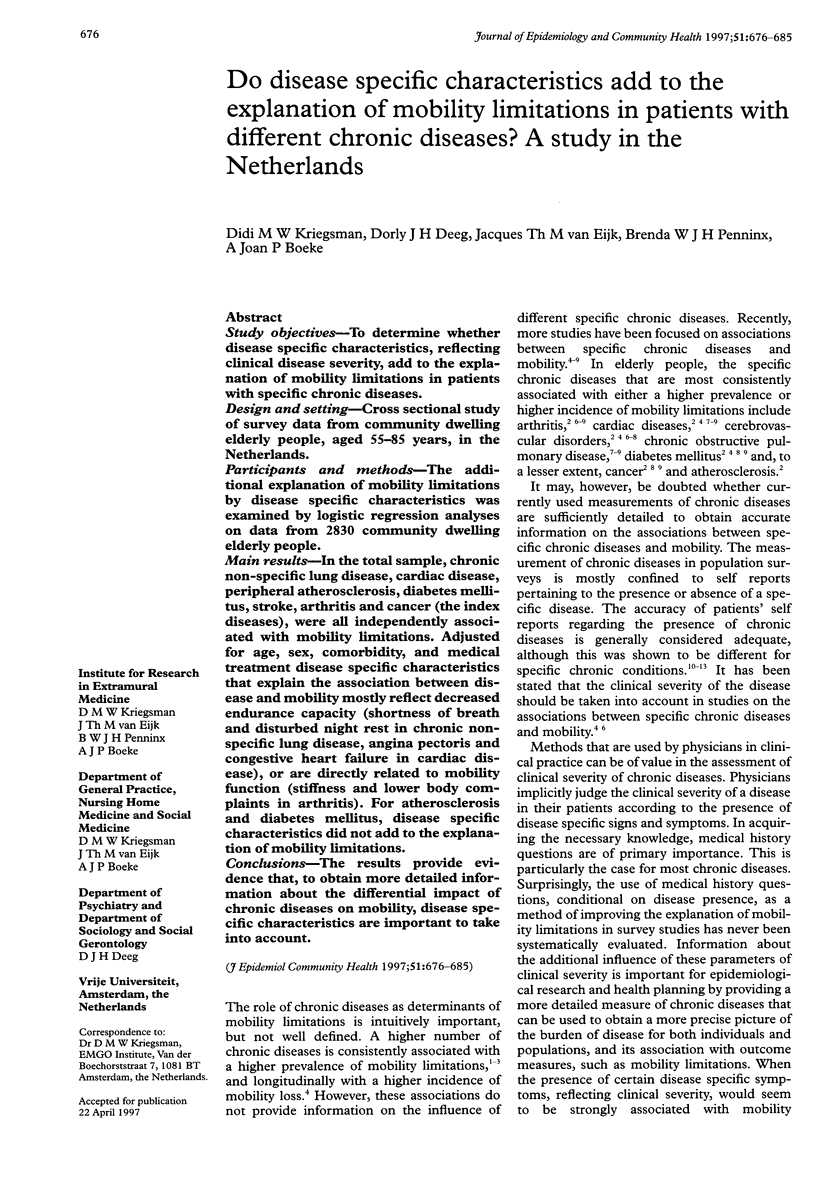
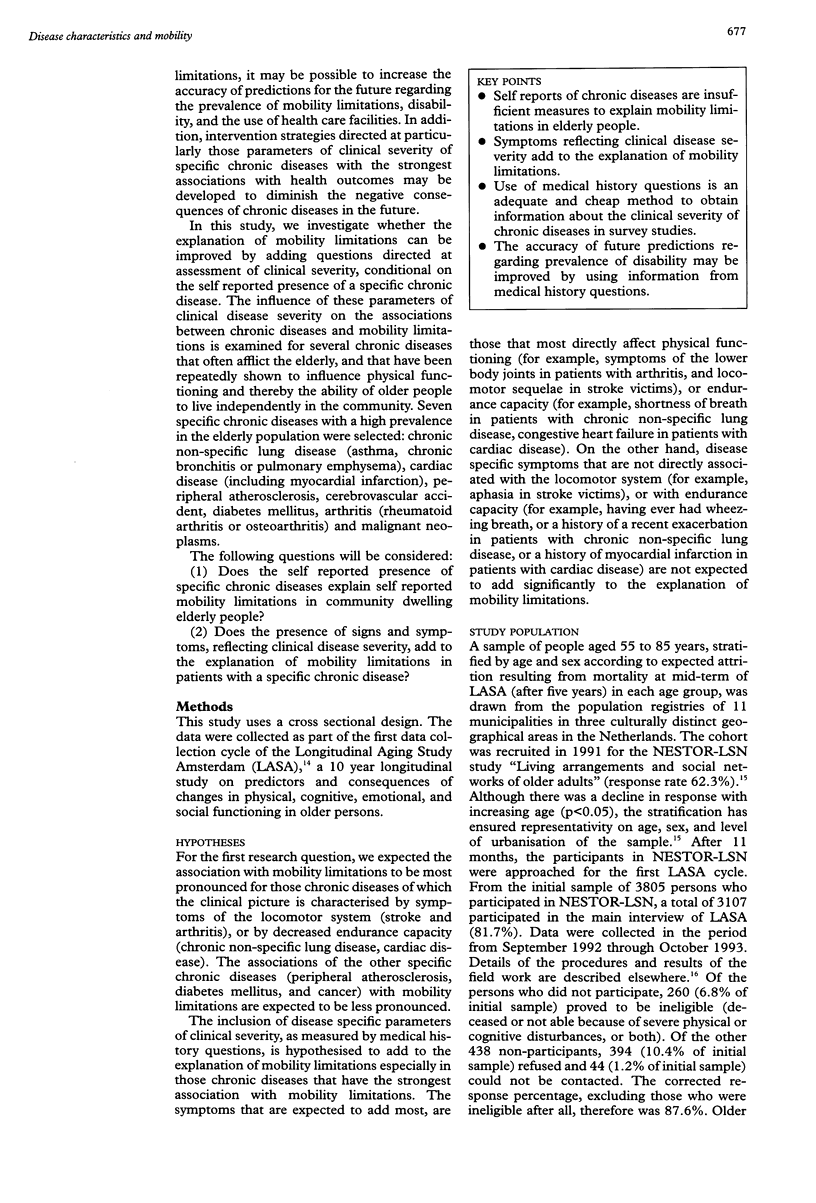
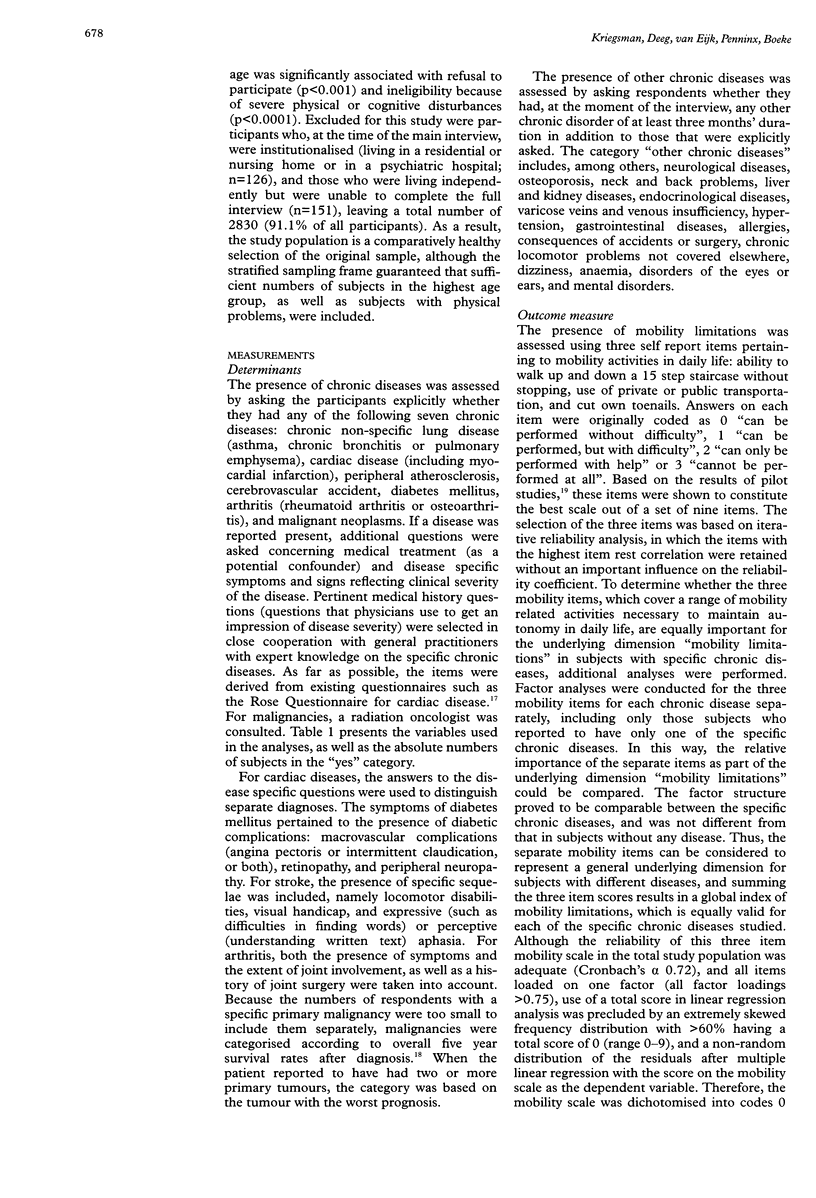
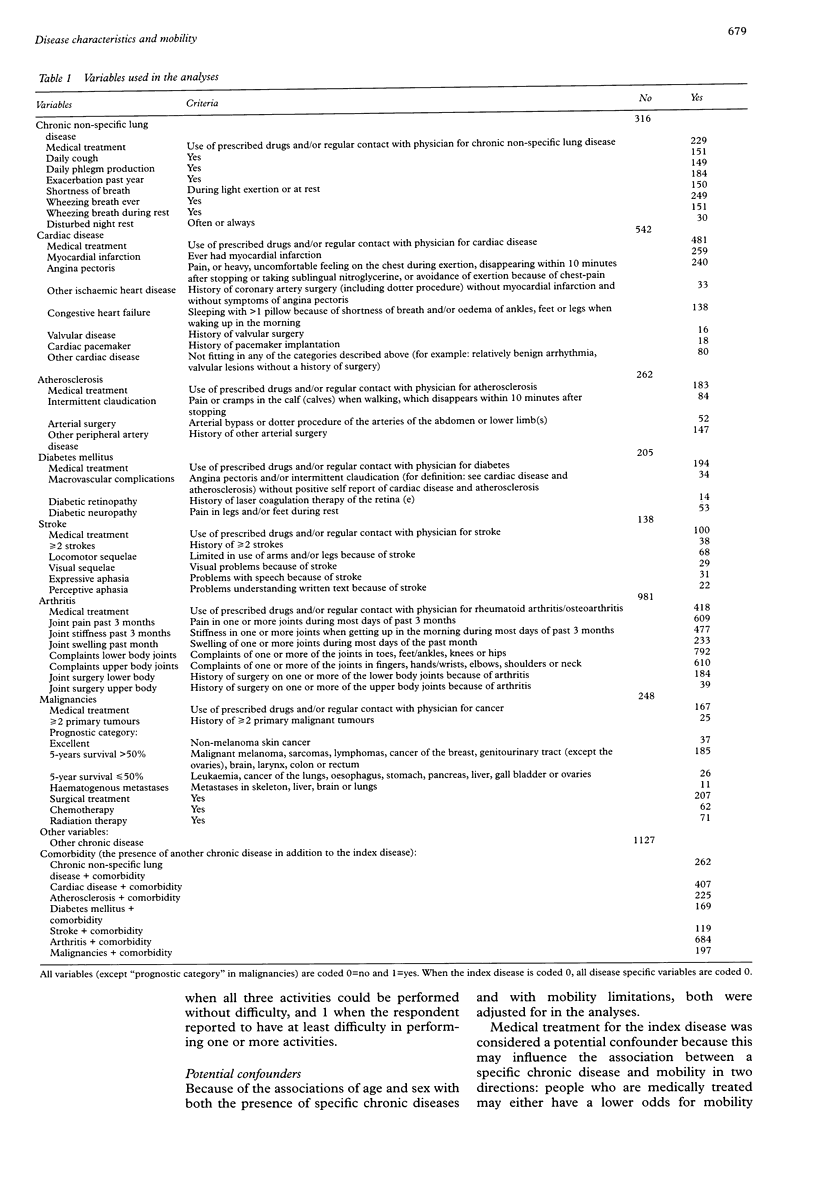
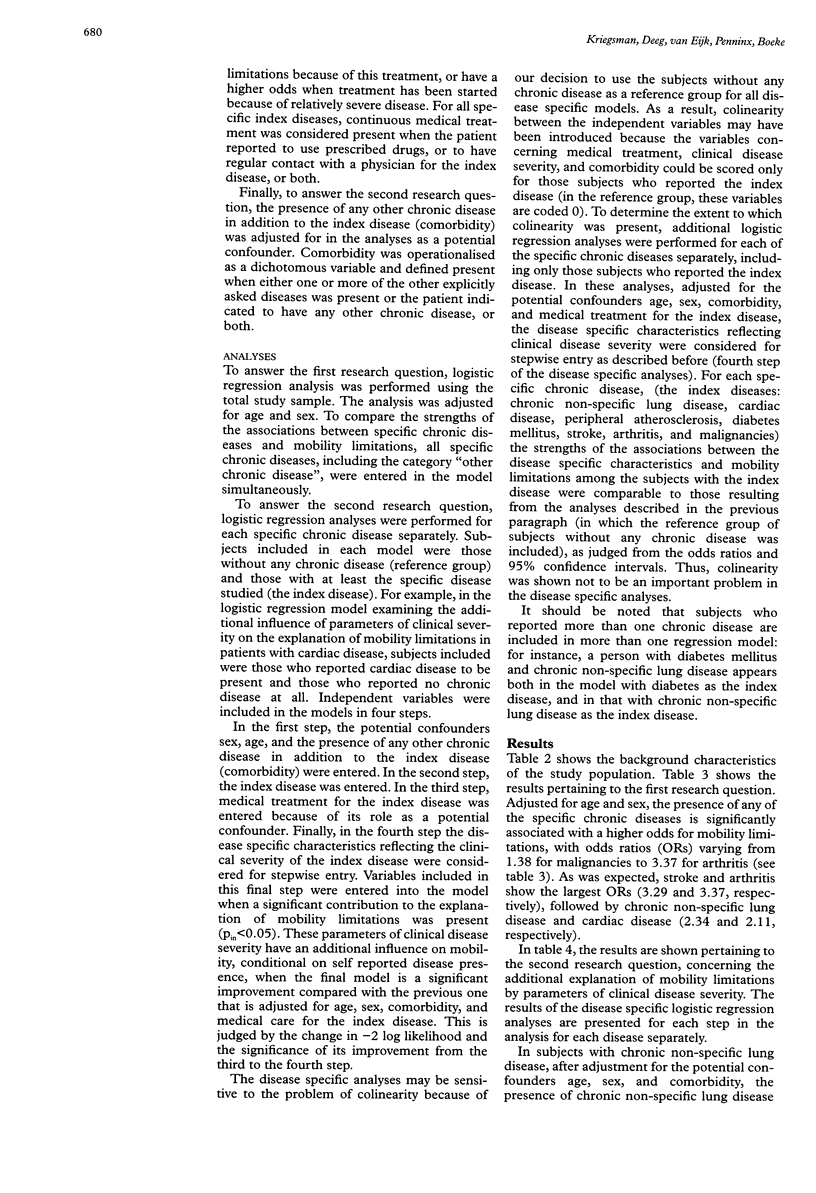
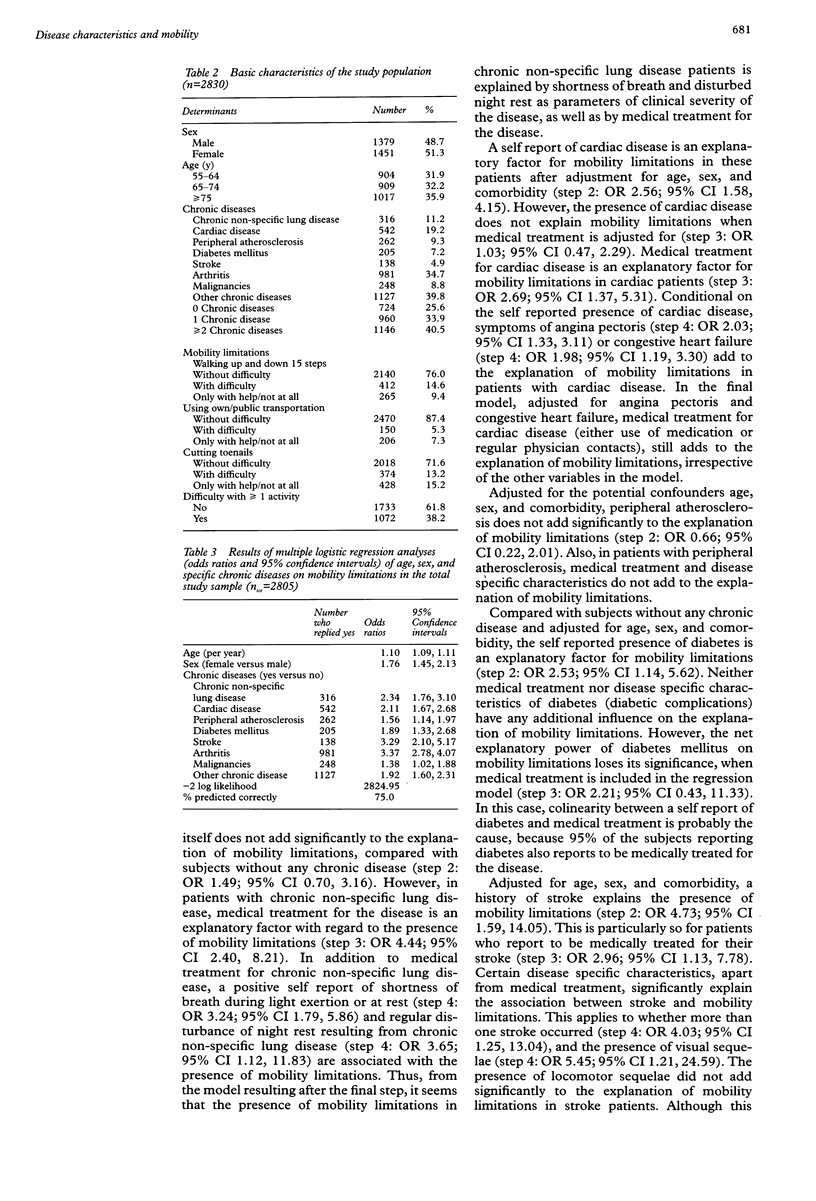
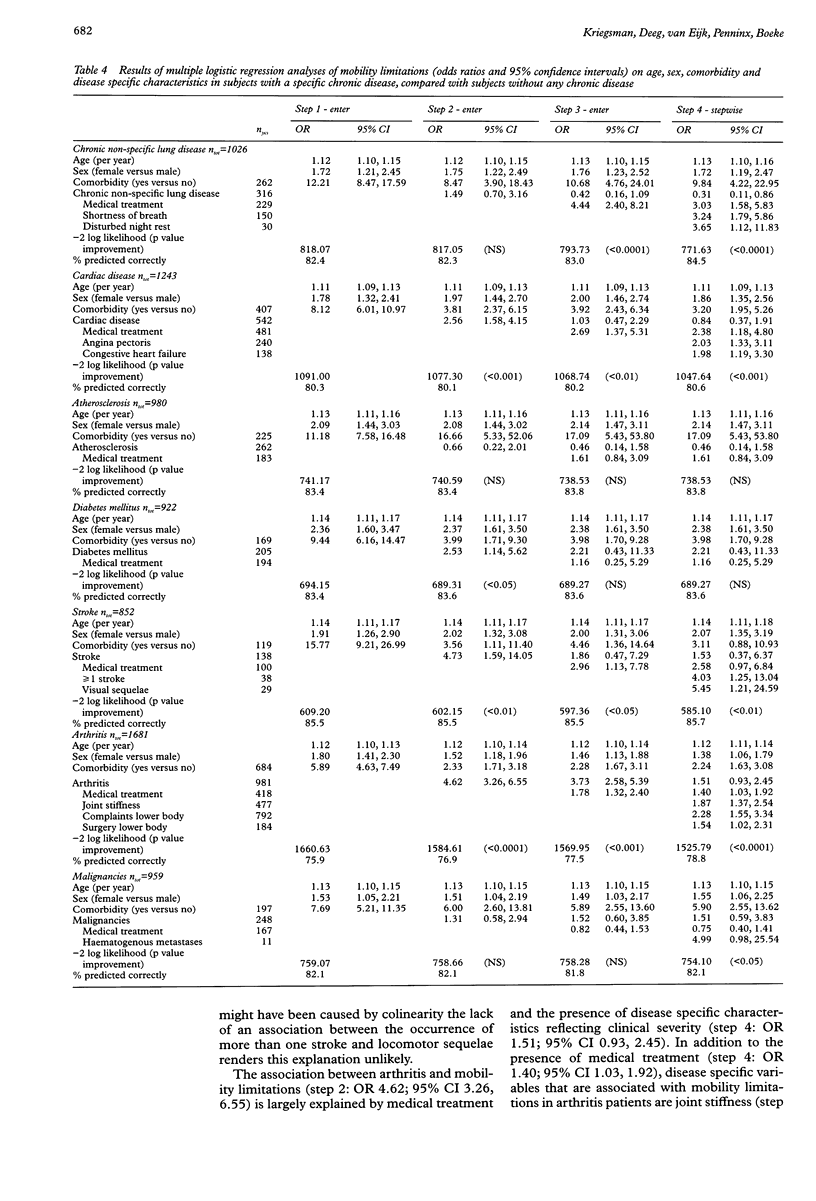
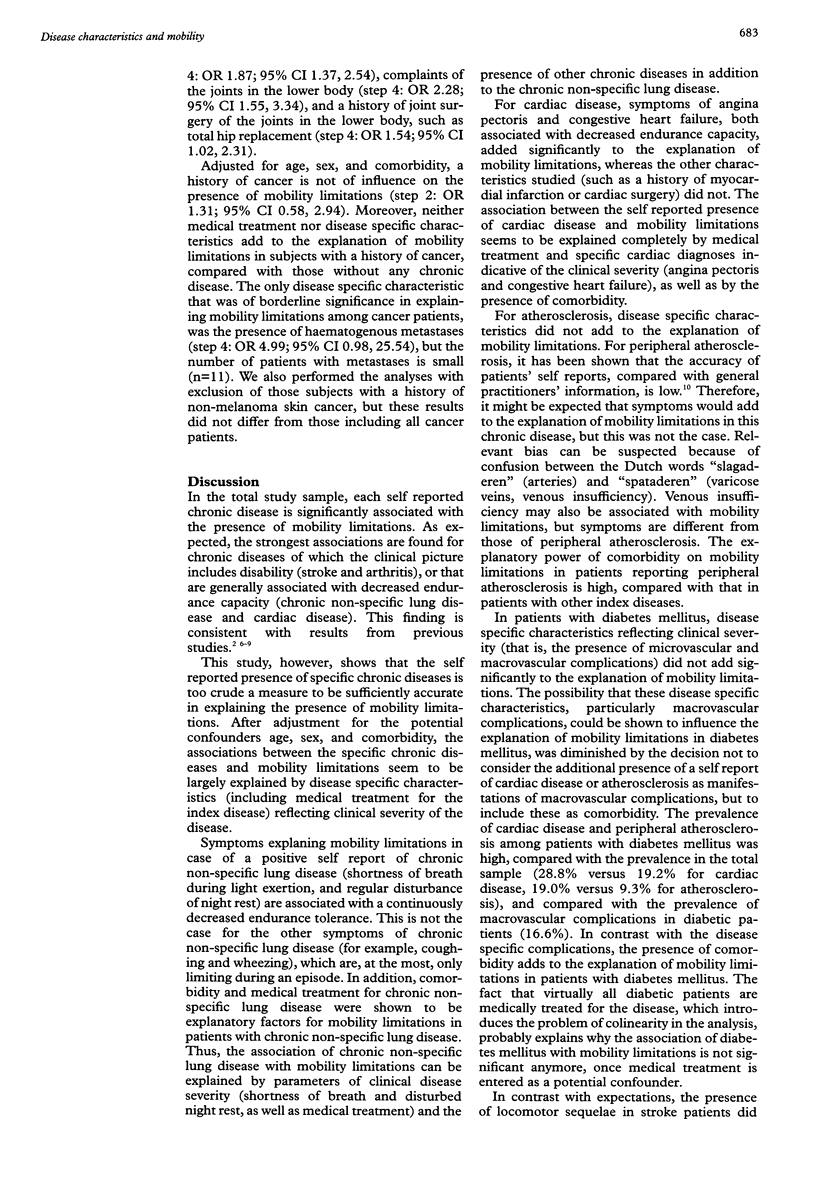
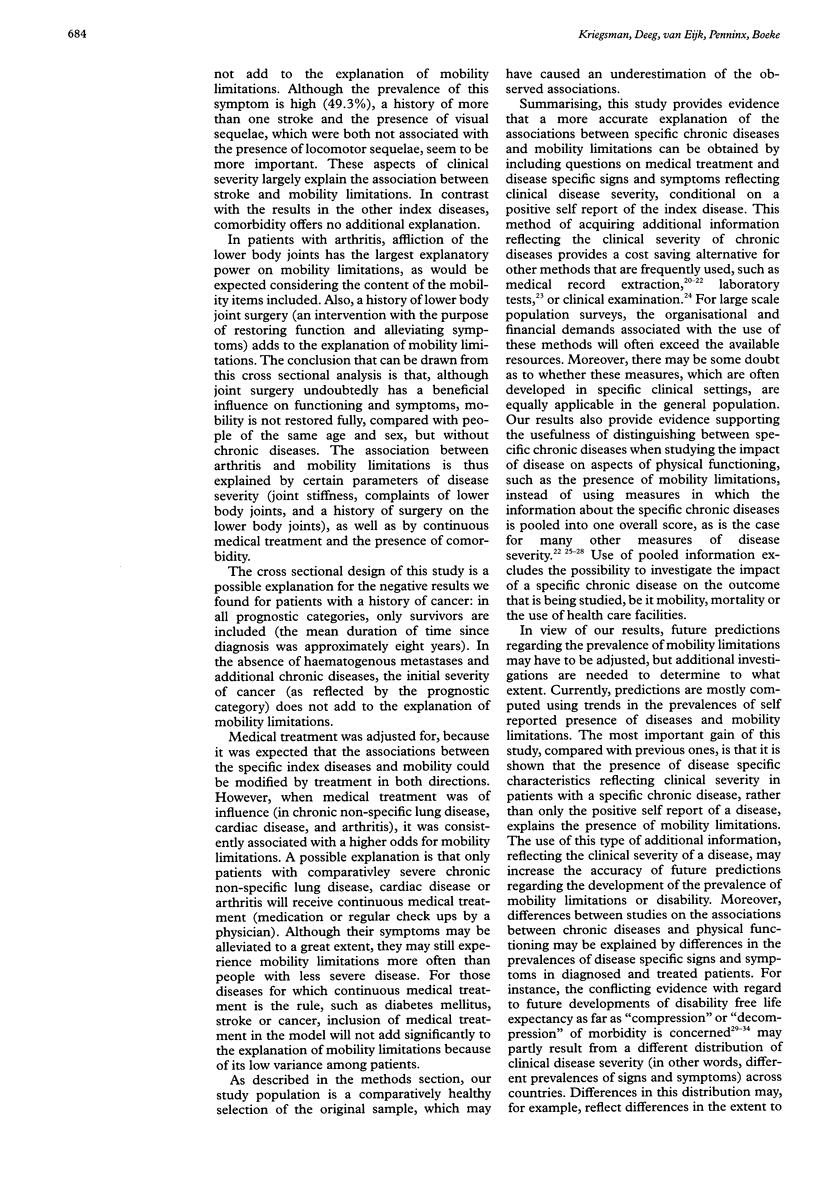
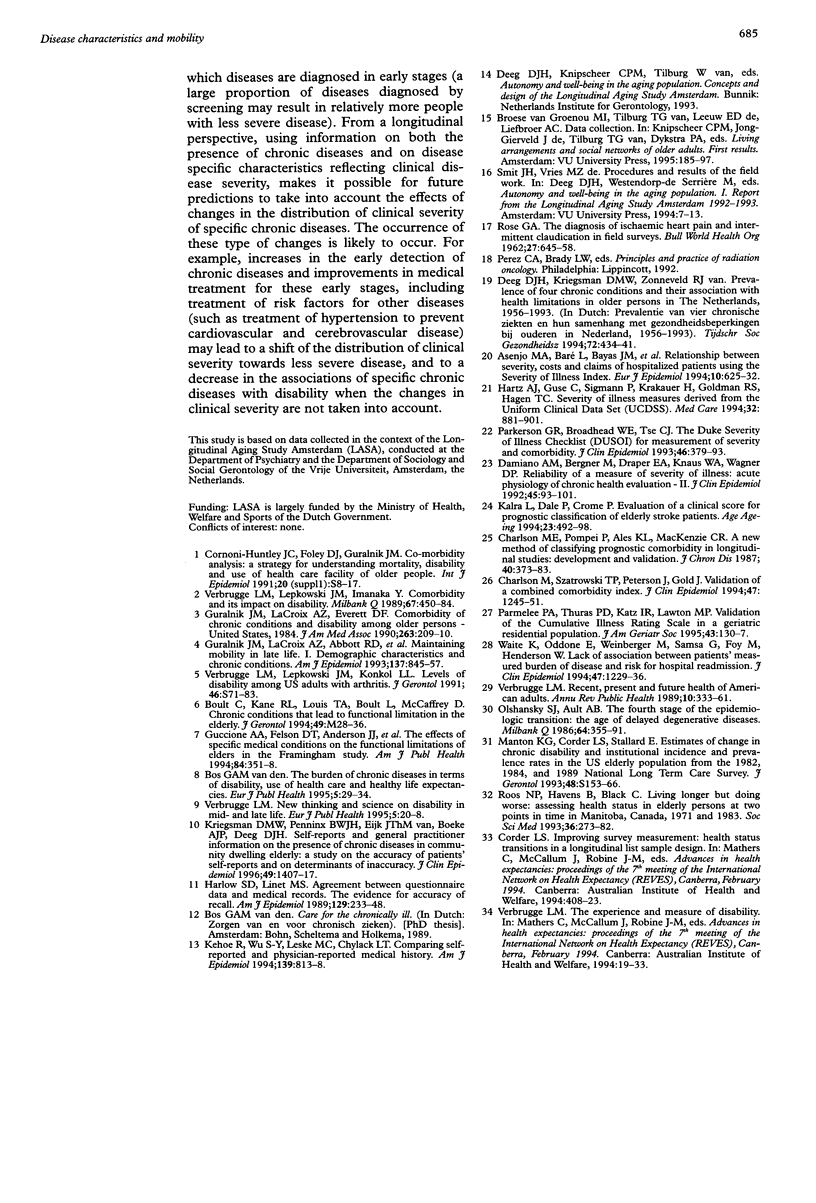
Selected References
These references are in PubMed. This may not be the complete list of references from this article.
- Asenjo M. A., Baré L., Bayas J. M., Prat A., Lledó R., Grau J., Salleras L. Relationship between severity, costs and claims of hospitalized patients using the Severity of Illness Index. Eur J Epidemiol. 1994 Oct;10(5):625–632. doi: 10.1007/BF01719583. [DOI] [PubMed] [Google Scholar]
- Charlson M. E., Pompei P., Ales K. L., MacKenzie C. R. A new method of classifying prognostic comorbidity in longitudinal studies: development and validation. J Chronic Dis. 1987;40(5):373–383. doi: 10.1016/0021-9681(87)90171-8. [DOI] [PubMed] [Google Scholar]
- Charlson M., Szatrowski T. P., Peterson J., Gold J. Validation of a combined comorbidity index. J Clin Epidemiol. 1994 Nov;47(11):1245–1251. doi: 10.1016/0895-4356(94)90129-5. [DOI] [PubMed] [Google Scholar]
- Cornoni-Huntley J. C., Foley D. J., Guralnik J. M. Co-morbidity analysis: a strategy for understanding mortality, disability and use of health care facilities of older people. Int J Epidemiol. 1991;20 (Suppl 1):S8–17. [PubMed] [Google Scholar]
- Damiano A. M., Bergner M., Draper E. A., Knaus W. A., Wagner D. P. Reliability of a measure of severity of illness: acute physiology of chronic health evaluation--II. J Clin Epidemiol. 1992 Feb;45(2):93–101. doi: 10.1016/0895-4356(92)90001-4. [DOI] [PubMed] [Google Scholar]
- Guccione A. A., Felson D. T., Anderson J. J., Anthony J. M., Zhang Y., Wilson P. W., Kelly-Hayes M., Wolf P. A., Kreger B. E., Kannel W. B. The effects of specific medical conditions on the functional limitations of elders in the Framingham Study. Am J Public Health. 1994 Mar;84(3):351–358. doi: 10.2105/ajph.84.3.351. [DOI] [PMC free article] [PubMed] [Google Scholar]
- Guralnik J. M., LaCroix A. Z., Abbott R. D., Berkman L. F., Satterfield S., Evans D. A., Wallace R. B. Maintaining mobility in late life. I. Demographic characteristics and chronic conditions. Am J Epidemiol. 1993 Apr 15;137(8):845–857. doi: 10.1093/oxfordjournals.aje.a116746. [DOI] [PubMed] [Google Scholar]
- Harlow S. D., Linet M. S. Agreement between questionnaire data and medical records. The evidence for accuracy of recall. Am J Epidemiol. 1989 Feb;129(2):233–248. doi: 10.1093/oxfordjournals.aje.a115129. [DOI] [PubMed] [Google Scholar]
- Hartz A. J., Guse C., Sigmann P., Krakauer H., Goldman R. S., Hagen T. C. Severity of illness measures derived from the Uniform Clinical Data Set (UCDSS). Med Care. 1994 Sep;32(9):881–901. doi: 10.1097/00005650-199409000-00001. [DOI] [PubMed] [Google Scholar]
- Kalra L., Dale P., Crome P. Evaluation of a clinical score for prognostic stratification of elderly stroke patients. Age Ageing. 1994 Nov;23(6):492–498. doi: 10.1093/ageing/23.6.492. [DOI] [PubMed] [Google Scholar]
- Kehoe R., Wu S. Y., Leske M. C., Chylack L. T., Jr Comparing self-reported and physician-reported medical history. Am J Epidemiol. 1994 Apr 15;139(8):813–818. doi: 10.1093/oxfordjournals.aje.a117078. [DOI] [PubMed] [Google Scholar]
- Kriegsman D. M., Penninx B. W., van Eijk J. T., Boeke A. J., Deeg D. J. Self-reports and general practitioner information on the presence of chronic diseases in community dwelling elderly. A study on the accuracy of patients' self-reports and on determinants of inaccuracy. J Clin Epidemiol. 1996 Dec;49(12):1407–1417. doi: 10.1016/s0895-4356(96)00274-0. [DOI] [PubMed] [Google Scholar]
- Olshansky S. J., Ault A. B. The fourth stage of the epidemiologic transition: the age of delayed degenerative diseases. Milbank Q. 1986;64(3):355–391. [PubMed] [Google Scholar]
- Parkerson G. R., Jr, Broadhead W. E., Tse C. K. The Duke Severity of Illness Checklist (DUSOI) for measurement of severity and comorbidity. J Clin Epidemiol. 1993 Apr;46(4):379–393. doi: 10.1016/0895-4356(93)90153-r. [DOI] [PubMed] [Google Scholar]
- Parmelee P. A., Thuras P. D., Katz I. R., Lawton M. P. Validation of the Cumulative Illness Rating Scale in a geriatric residential population. J Am Geriatr Soc. 1995 Feb;43(2):130–137. doi: 10.1111/j.1532-5415.1995.tb06377.x. [DOI] [PubMed] [Google Scholar]
- ROSE G. A. The diagnosis of ischaemic heart pain and intermittent claudication in field surveys. Bull World Health Organ. 1962;27:645–658. [PMC free article] [PubMed] [Google Scholar]
- Roos N. P., Havens B., Black C. Living longer but doing worse: assessing health status in elderly persons at two points in time in Manitoba, Canada, 1971 and 1983. Soc Sci Med. 1993 Feb;36(3):273–282. doi: 10.1016/0277-9536(93)90010-2. [DOI] [PubMed] [Google Scholar]
- Verbrugge L. M., Lepkowski J. M., Imanaka Y. Comorbidity and its impact on disability. Milbank Q. 1989;67(3-4):450–484. [PubMed] [Google Scholar]
- Verbrugge L. M. Recent, present, and future health of American adults. Annu Rev Public Health. 1989;10:333–361. doi: 10.1146/annurev.pu.10.050189.002001. [DOI] [PubMed] [Google Scholar]
- Waite K., Oddone E., Weinberger M., Samsa G., Foy M., Henderson W. Lack of association between patients' measured burden of disease and risk for hospital readmission. J Clin Epidemiol. 1994 Nov;47(11):1229–1236. doi: 10.1016/0895-4356(94)90127-9. [DOI] [PubMed] [Google Scholar]


